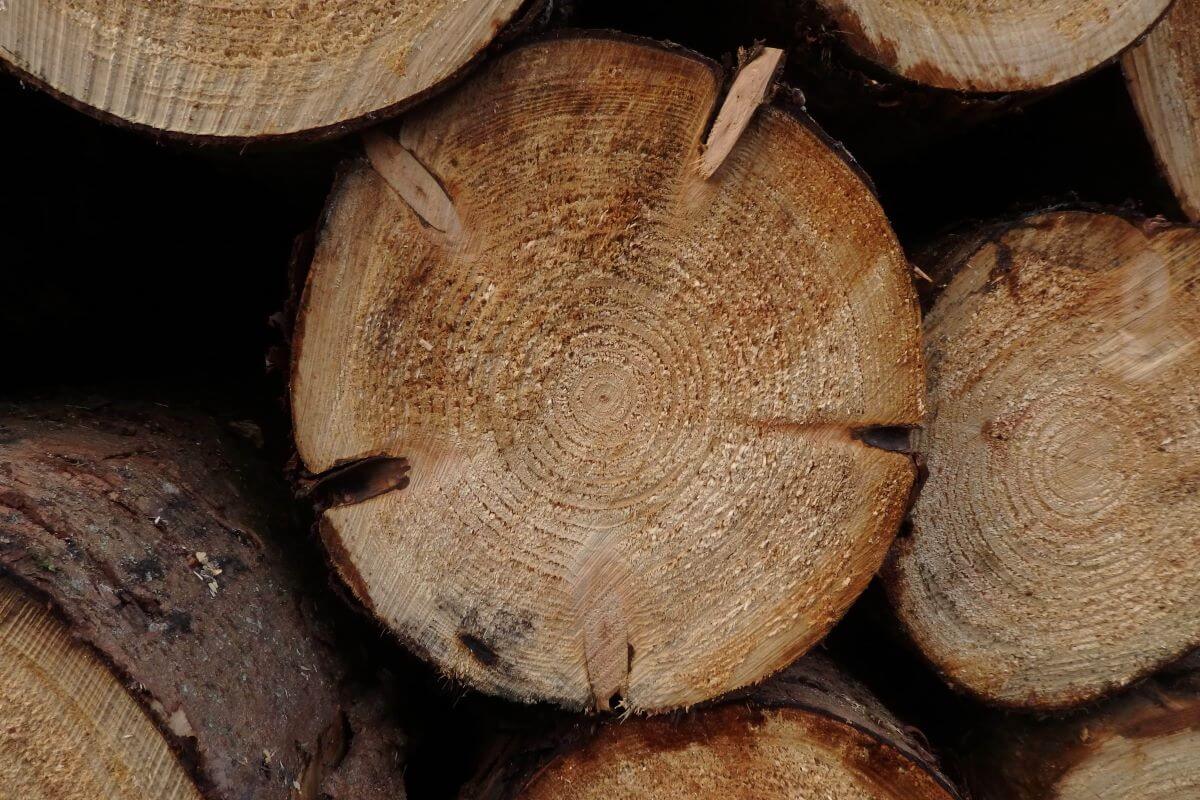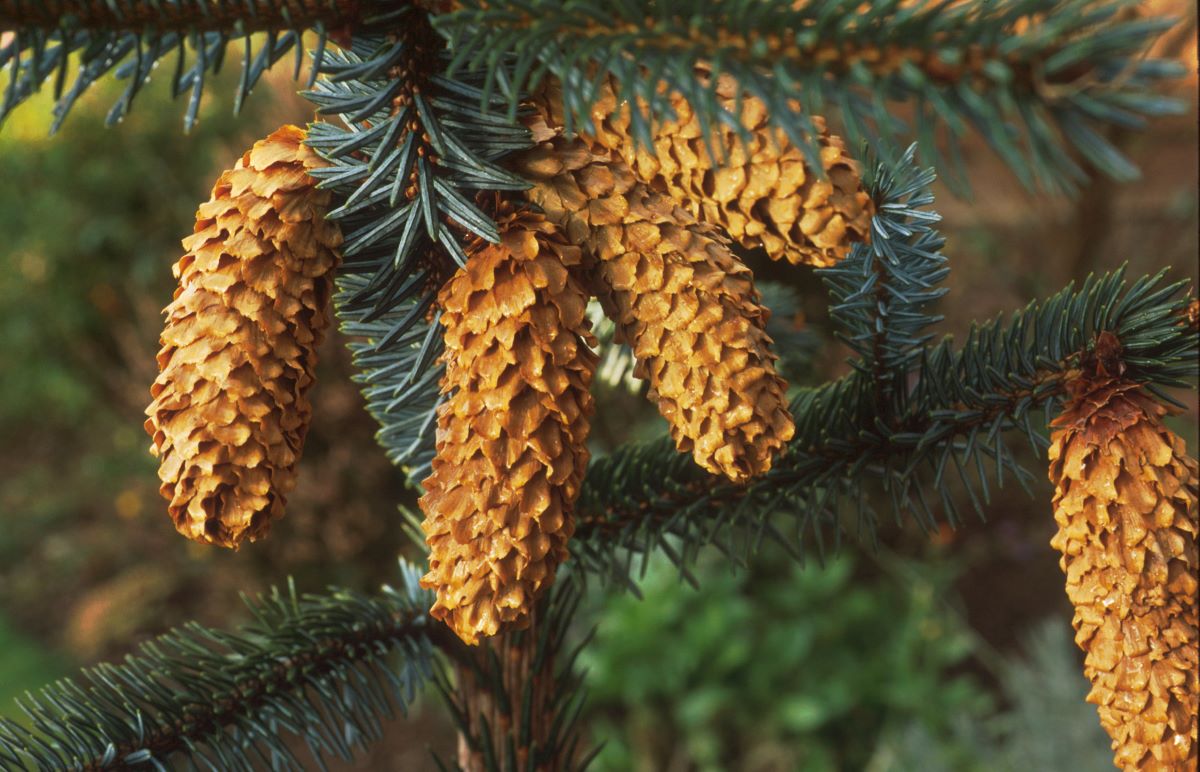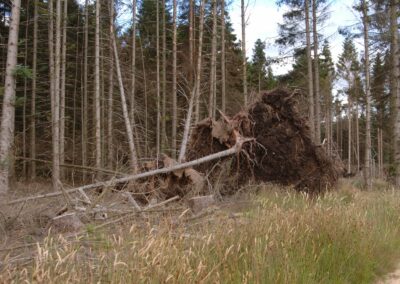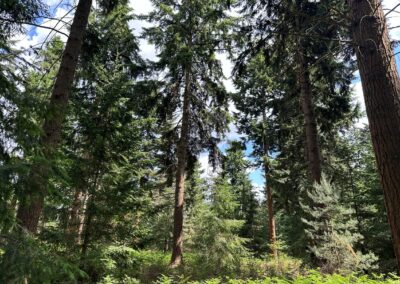Identifying proxy measurements for drought tolerance in Sitka spruce
Project status Complete (April 2022 to March 2025)
Context
Drought occurrence and severity are expected to increase in large parts of Britain as a consequence of climate change. Sitka spruce, which accounts for 60% of UK timber production, originates from the oceanic north west of America and is not adapted to drought conditions. Evidence from central Europe shows that drought is a major driver of pest outbreaks that have devastated large areas of native Norway spruce. Additionally, drought is suspected to be a factor in internal wood failure (cracks), which greatly reduced the value of the timber produced. Given this context, the resilience of spruce forests needs to be enhanced in Britain in order to secure the provision of high-quality timber to industry. This is a major objective of the Forestry Commission and one of the key elements of the UK Net-Zero Strategy.
Research Aims and Objectives
The aim of this project is to identify a series of heritable traits for drought tolerance (characteristics of the tree that can be passed to their offspring) in the Sitka spruce breeding population, which can be used to select for more resilient trees.
Project Description
Studying the genetic control of relevant resilience traits. Different traits known to be associated with resilience to drought will be extracted from wood samples from a number of different cloned genetic families from Forest Research’s clone banks to assess their heritability. These traits will also be calculated in the original clones to determine evaluation of the full breeding population from clone banks is possible.
Testing proxies (easy to measure variables) such as wood density and drought cracks, that can be used as markers of the existence of the above traits. These proxies will also be tested in clone banks.
Economically quantifying the benefits of including drought tolerance in the breeding criteria against the current system.
Outputs
Our outputs will be:
- A trade article on heritability estimates for resilience traits
- Report on resilience proxies
- New criteria in index selection (if applicable)
- Submission of manuscript aimed at a scientific publication on the economic quantification of considering drought tolerance as a breeding criterium.

Share this project on social media
Related Projects
Our Partners
Social media
Explore
Contact
© 2022 Centre for Forest Protection. All rights reserved.


